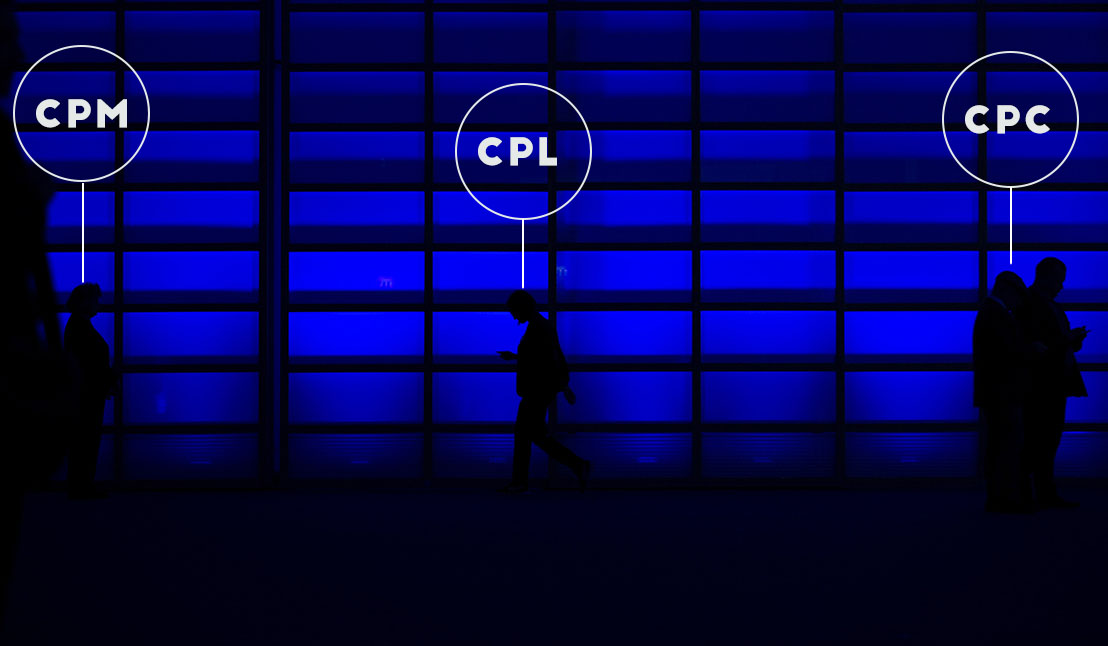 Glossary
Glossary
CPM, CPL, and CPI – what do they all mean?
It’s very common to find complex terms in the marketing world. This is due to the mix of languages and acronyms floating about that are very similar to one another. We’ve already done a post about the differences between CTR, CPC, and CPA to clear up their individual meanings. This time round, we’ll tell you about three more acronyms that have similar meanings: CPM, CPL, and CPI.
CPM – Cost per Mille or Cost per Thousand, what is it?
The acronym CPM comes from the term Cost per Mille (thousand in French). You’re probably asking, a thousand what? Well, a thousand impressions. When we talk about impressions in a digital campaign, we’re referring to the amount of times an advert is shown and the simplest metric to count them is cost per mille, that’s to say, the value for every thousand times an ad is shown.
In other words, brands set the price they want for every 1000 times that their advert is seen. The adverts used in this type of campaign can be text or graphics and are always driven by location.
For example, if we talk about it in traditional marketing terms, an advertiser would have to pay each time a thousand people pass in front of one of their amazing adverts or for the number of tele spectators watch their commercial during primetime. However, unlike traditional adverts, in the digital arena, we can gather the exact number of times an advert has been seen.
These types of adverts are normally used for branding campaigns, i.e. to raise awareness about the brand.
CPL – Cost per Lead, what does it entail?
Once more, we’re referring to the cost of “something”. This time, it’s all about leads – Cost per Lead.
Unlike with CPC, we’re talking about extra demands from the user. We can talk about a lead when we manage to gain data through a form, coupon download or newsletter subscription. We’re talking about counting the moment when a user becomes a lead.
Lead basically means a potential client. When they leave us their data, they show that they have some interest in our brand, in what we offer, that they want to keep in contact or that they’re looking for some benefit. To understand this process, we need to identify the three different steps a lead goes through.
- The first is what’s called a cold lead. This is when a user becomes a lead, they accepted to leave us their data in return for something, but despite showing interest, we can’t be sure that they want to buy something, so we have to work a bit more on them to convince them.
- The second step is a marketing-qualified lead. They receive our emails and read the promotions we send, looking to our page for more information. At this moment, it’s almost a fact that they’re interested in buying.
- Finally, a hot lead or a sales-ready lead. This is when they’re just about to become a client. In this case, our lead is at the BoFu stage (Bottom of the Funnel).
The goal of this type of campaign is to legitimately create a database of potential clients and people interested in the services we offer. Finally, a CPL campaign can lead to something else like client loyalty or retargeting through mailing or text messaging.
CPI – Cost per Install, what’s that?
Cost per Install literally refers to the payment needed to install software or an app we need, whether we buy it or download it on any of our mobile devices.
In this case, each time a user installs one of our apps, the CPI will reflect the investment we made for that action to be possible.
CPI encompasses the investment we need taking into account the following CPI factors:
- Cost of promotion
- Cost of app development and maintenance
- Cost of the app for the user
Finally, once we consider all the factors, we can determine the amount of money we need to invest each time the app is installed. The more downloads we have, the lower the CPI and vice versa.


